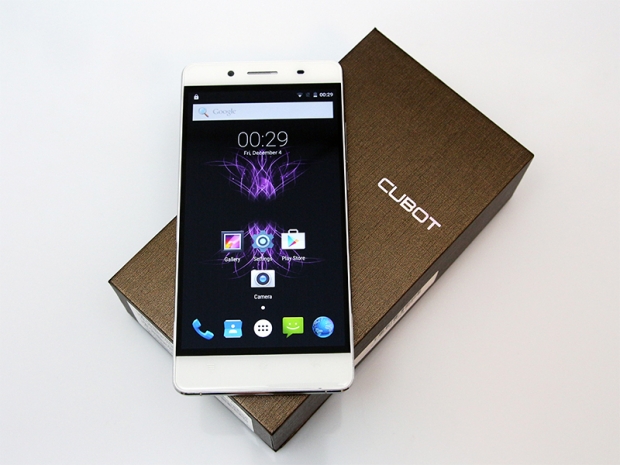Index
Cubot X16 Specs and Performance
You can’t expect miracles from a $150 phone, but we’ve seen some quite powerful hardware even in this price segment. The Cubot X16 is not based on an octa-core SoC. It relies on MediaTek’s quad-core MT6735 (Cortex-A53), and it has 2GB of RAM to play around with. Let’s take a closer look at the spec.
Cubot X16 specs:
- SoC: MediaTek MT6735A, 28nm
- CPU: four Cortex-A53 cores up to 1.3GHz
- GPU: ARM Mali-T720 MP2 GPU at up to 450MHz
- RAM: 2GB LPDDR3 533MHz
- Storage: 16GB eMMC 4.5 internal storage, expandable via microSDXC slot
- Display: 5-inch 1080p IPS panel (JDI)
- OS: Android 5.1
- Rear camera: 13-megapixel sensor, f/2.0 aperture, 5-element lens
- Front facing camera: 5-megapixel sensor, f/2.4 aperture, 88 degree field of view.
- Battery: 2500mAh lithium ion, non-removable
- Dimensions: 143.4 x 69.4 x 6.3 mm
- Weight: 150g
- WiFi and Bluetooth: 802.11b/g/n WiFi and Bluetooth 4.0
- Sensors: ambient light, accelerometer, proximity, GPS, A-GPS
- SIM card: dual SIM (micro SIM and nano SIM), dual standby
- Network support:
- 2G: GSM 850/900/1800/1900MHz
3G: WCDMA 900/2100MHz
4G: FDD-LTE: 800/1800/2100/2600MHz (B20/1/3/7) (Please check regional compatibility prior to purchase)
While Cubot went all out on the exterior, the spec leaves much to be desired. The CPU is ok for this type of device, but the phone relies on slower RAM and storage than latest phones from big brands. The limited sensor suite could be problem for some users; there’s no compass, no gyro.
Network support could have been better, but at least the phone supports FDD-LTE Band 20, which is good news for a lot of international users. However, limited 3G support is not.
We also have no idea what sort of sensors Cubot is using. Both cameras can be interpolated, but they are based on 13- and 5-megapixel sensors. Cubot states that the main camera employs a 1/2.7” sensor, 5-element lens covered by a blue film, and an f/2.0 aperture. Not bad, but we are always skeptics when it comes to ultrathin phones and their cameras. There’s just not a lot of room for good optics in such designs.
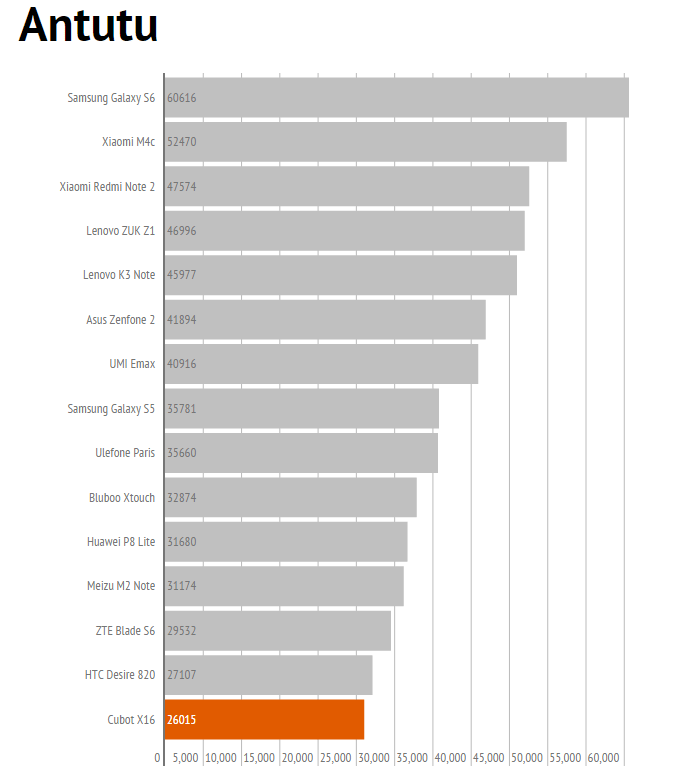
In Antutu, the quad-A53 ends up dead last. However, it's all a matter of perspective. Octa-core Snapdragon 615 and MT6753 aren't much faster, 10% to 20% respectively.
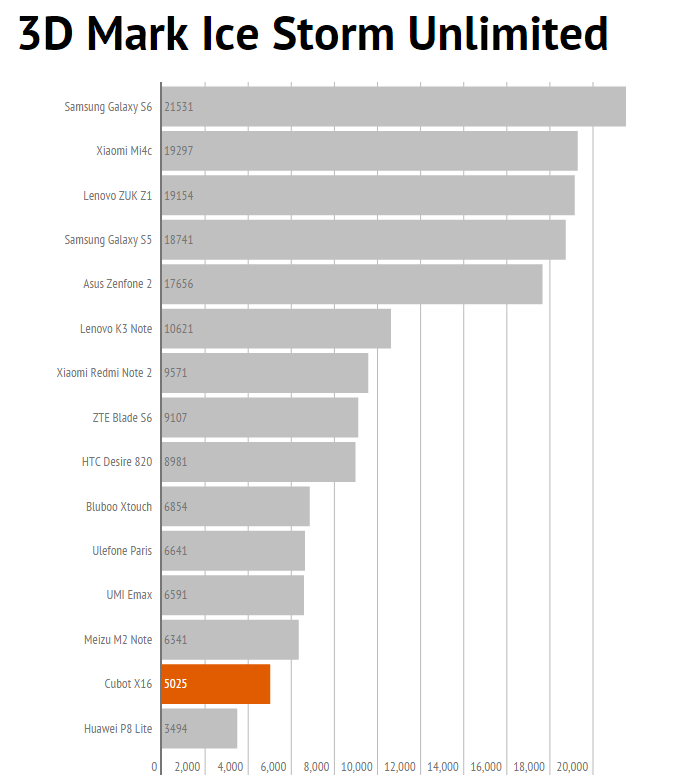
In 3D Mark the Mali-T720 manages to outpace the Mali-T450 used in Huawei's Kirin 620 SoC, but it ends up about 25% slower than the Mali-T720 implementation used in the octa-core MT6753. The reason? The latter packs three cores, while the MT6735 has just two.
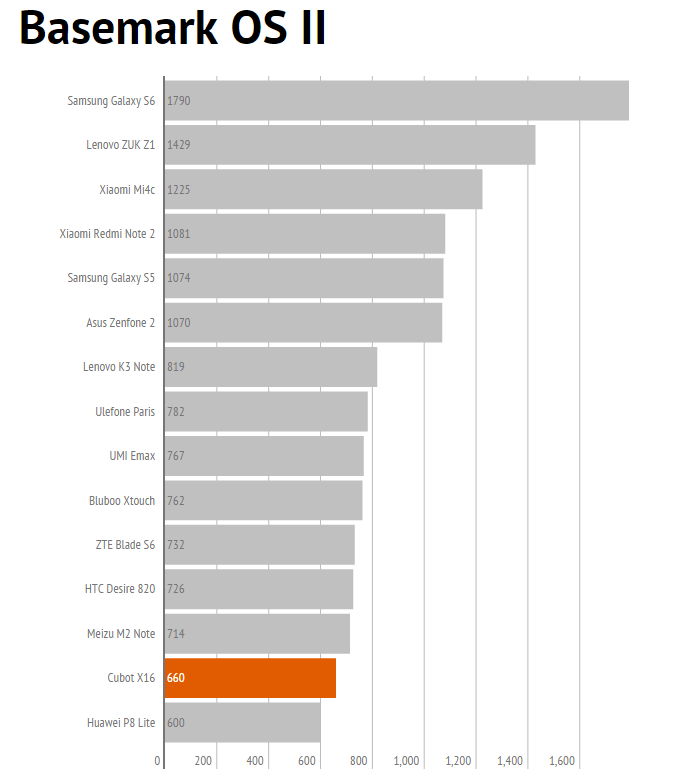
In Basemark, the MT6735 comes very close to the MT6753 and Snapdragon 615, and manages to outpace the octa-core Kirin 620.
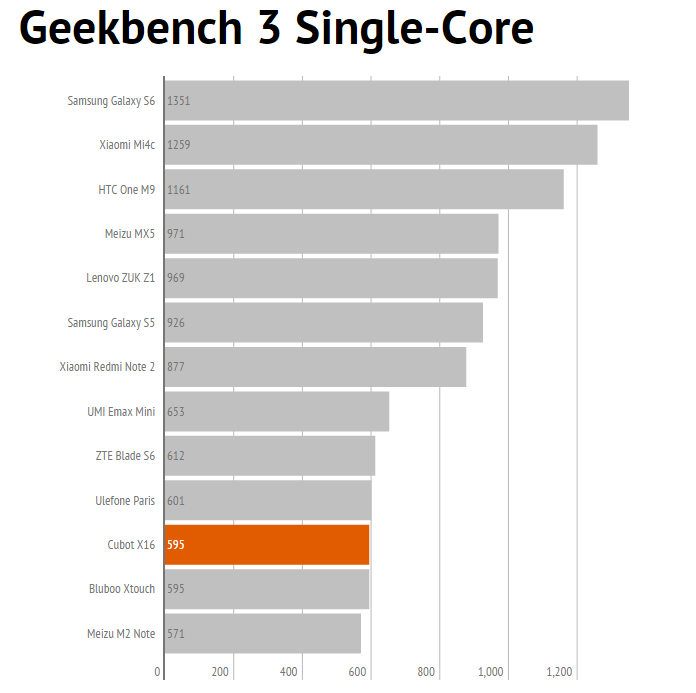
In Geekbench single-core, the MT6735 is on a par with its octa-core sibling (MT6753). However, it can't keep up in multi-core benches.
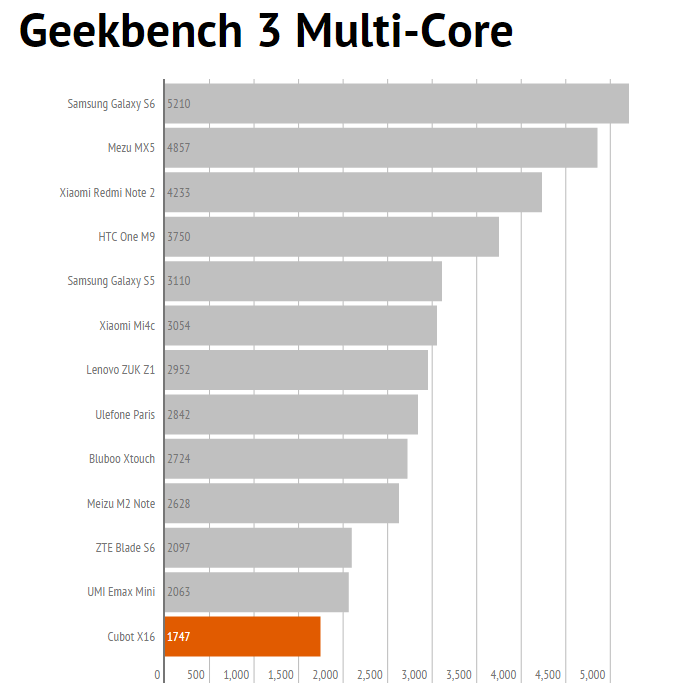
So, the Cubot X16 cannot keep up with octa-cores in most benchmarks. However, we see the logic behind the company's decision to use the slower quad-core processor. This is a thin phone, so it's important to keep thermals and power consumption at bay. Besides, the performance gap between the MT6735 and octa-core parts like the MT6753, Snapdragon 615, and HiSilicon Kirin 620 is not that big.

